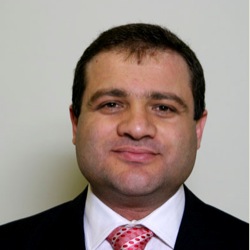
Having been accepted as a deadline to switch off terrestrial television broadcasting in analogue and line up digital terrestrial no later than 2015, Turkey is running the transition period from analogue to digital. Guest Opinion by İbrahim Cucioglu (pictured), deputy general manager (Technical), Anten
In 2011 the Turkish government launched a new TV and radio law from RTUK (Radio and Television Supreme Council), the regulatory authority. The law fixed as follows: that within one year, the digital terrestrial television frequency planning would be done by RTUK; wiithin one year after the first year (when the frequency planning should be in hand) the tender of the digital terrestrial television licenses would be done; and that within two years after the tender and the authorisation of the terrestrial broadcasters, the installations and line up of the digital terrestrial system would be done.
There was a special article in the law saying that after the authorisation of the digital terrestrial licenses, the national terrestrial license holders should establish a single company to install and manage the new digital terrestrial systems and transmitting stations. In order to be ready for operation at sites, the present national broadcasters and the public broadcaster (TRT) established a new joint venture company called Anten AS in May 2012.
RTUK launched the frequency planning parameters in December 2012 with the following considerations: system is DVB-T2; modulation is 64 QAM; FEC 2/3; guard interval of 19/256 (266 uS); FFT size 32k; pilot pattern PP4; and capacity of 27 Mbps.
It targeted indoor reception in the 16 biggest cities as well as portable outdoor reception for the rest. A total of seven multiplexes are planned nationwide: one mux for the public broadcaster, five for the national broadcasters and one for the regional and locals.
TRT was allocated one special multiplex and five multiplexes were tendered out in April 2013 by RTUK, the regulatory authority for the national broadcasters with 11 HD channels (consisting of eight entertainment and three thematic plus 22 SD channels consisting of 11 entertainment and 11 thematic).
Ankara trials
Following the launch of the frequency plan, Anten lined up a trial in capital city Ankara with the permission of RTUK. All of the present stations were studied according to the extra capacity for the DVB-T2 broadcast in terms of energy, antenna system and also suitable antenna pattern — which has to be similar to the frequency plan parameters.
As soon as the project was formed, transmitters, new antenna systems, head-end and the other equipment were installed and some changes were made in the present stations.
The trial was lined up at the beginning of March 2013 In a 27Mbps multiplex with two HD and five SD channels. The SFN network of the trial includes three main transmitting sites. Two of the present antenna systems were used and one antenna system was newly installed — but all of the transmitting stations are the existing ones.
Anten has used different brands and types of equipment in the trial. The outdoor measurements have been completed and the most important, the indoor measurements, have recently begun. Anten has prepared the deployment project but perhaps it will need a slight arrangement in the main project after the results of the trial, in terms of comparisons between the theoretical and the measured (practical) values.






